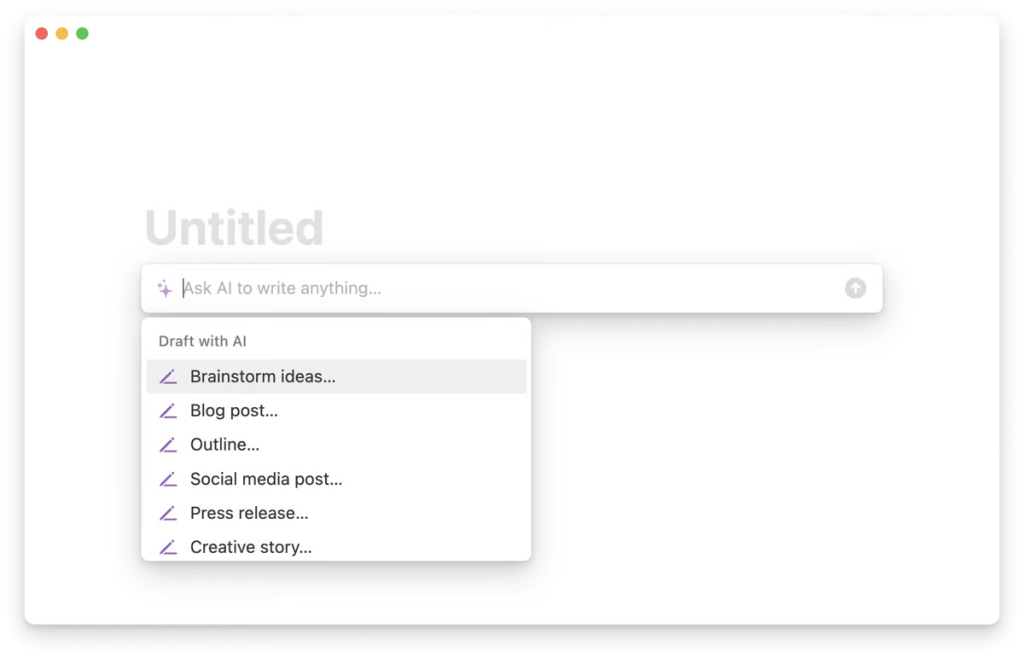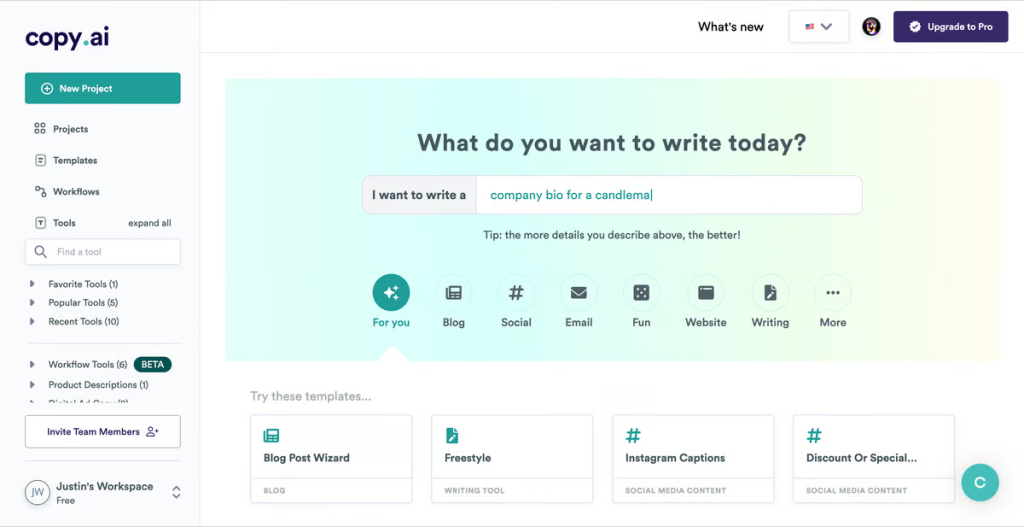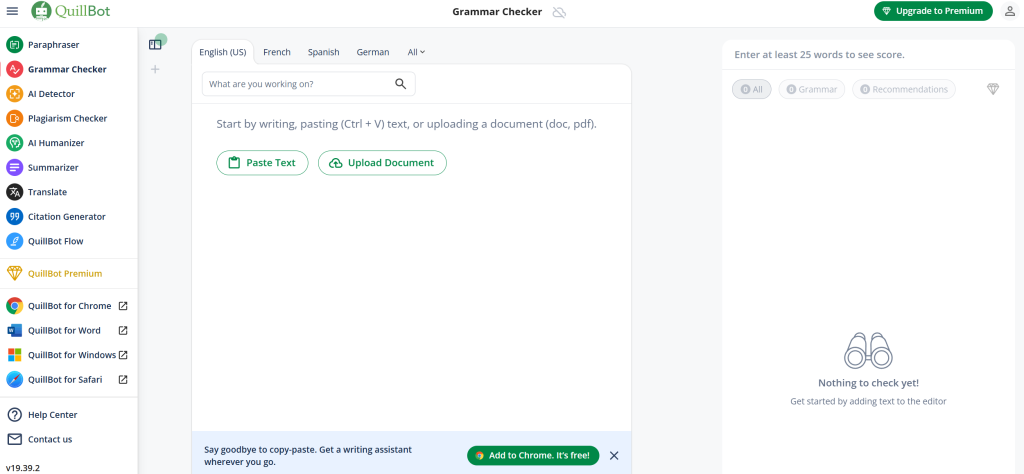
Creating high-quality content consistently can be a challenge, especially when deadlines are tight and teams are stretched. That’s where AI editor tools come in – offering intelligent assistance that improves clarity, coherence, and style in real time. These tools are designed to support your creative process, helping you focus on big ideas while the AI handles structure, grammar, and flow. Many platforms now integrate with your favorite writing tools, making it easier than ever to adopt AI into your workflow. For all solo creators, content strategists, or digital agencies, this list of the best AI editor tools will help you write smarter, faster, and more effectively.
Quick Summary: Best AI Editor Tools (2025)
- FuseBase – AI editing with branded portals, task automation, and collaboration.
- Grammarly Premium – Real-time grammar, tone, and clarity checks across apps.
- Notion AI – Draft, brainstorm, and edit directly in project workspaces.
- Copy.ai – Templates for ads, captions, and quick copy variations.
- Quillbot – Paraphrasing, summarization, and citation support.
What Is an AI Editor
An AI editor is a digital writing assistant powered by artificial intelligence, designed to help users create better content with less effort. At its core, it’s more than a spellchecker. It’s an intelligent system that understands language, evaluates context, and provides real-time suggestions for improving grammar, flow, word choice, and overall readability.
AI editor tools help reduce cognitive load by automating the editing process, making it easier to maintain quality even on tight deadlines. With features like tone detection and style consistency, these tools enable smarter, faster content production – all while helping maintain your unique voice and message.
The Key Advantages of AI Editor for Modern Creators
For creators juggling multiple deadlines, channels, and content types, an AI editor offers unmatched support. These tools work behind the scenes to help you stay focused on ideas rather than mechanics. What you gain using AI Editors:
- Instant feedback on grammar, structure, and tone. AI editors analyze your writing in real time, flagging grammatical issues, awkward phrasing, and inconsistent tone as you type. This immediate feedback loop helps you correct mistakes early and write with greater confidence.
- Smart rewriting suggestions to improve flow and clarity.These tools don’t just point out errors – they offer meaningful suggestions to rewrite clunky sentences, simplify complex ideas, or make your messaging more persuasive and easy to follow.
- Reduced time spent on editing and manual reviews. AI editors cut down the need for back-and-forth revisions by handling a large portion of the editing process automatically. This frees up time for more creative work and faster publishing cycles.
- Consistent voice across blog posts, emails, and marketing content. Maintaining a brand voice across multiple platforms is challenging, especially for teams. AI editors help apply style and tone guidelines to ensure your brand’s message is cohesive everywhere it appears.
- Enhanced creativity by offloading repetitive editing tasks. By automating grammar checks, passive voice detection, and formatting fixes, AI editors give you more mental space to focus on storytelling, ideation, and strategic content planning.
Core Features of an AI Editor
The best AI editor tools go far beyond fixing typos. Here are the core features to look for:
- Real-Time Grammar and Spelling Checks: Instantly catch typos, punctuation issues, and grammar mistakes as you write.
- Tone Suggestions: Adjust your voice to suit different audiences and platforms.
- Rewriting: AI editors offer alternative versions that improve clarity, flow, and impact, while preserving your message.
- Readability Analysis: Receive feedback on sentence complexity, passive voice, filler words, and overall structure.
- Customization for Brand Voice: Define brand-specific rules and tone preferences to maintain a consistent voice across all content.
- Plagiarism Detection: Ensure originality with built-in plagiarism checkers that flag duplicate content before publishing or submitting.
- Multilingual Support: Some AI editors offer real-time assistance in multiple languages.
- SEO and Keyword Optimization: Enhance your content’s visibility with keyword prompts, readability scores, and metadata tips.
These features work together to reduce editing time, increase writing quality, and give you more confidence in every piece of content you create.
Top 5 AI Editor Platforms in 2025
1. FuseBase – Best for Creators Who Work with Clients and Teams

FuseBase is more than a writing assistant – it’s a full creative workspace. This platform helps content creators and service-based professionals not only generate and edit content, but also deliver it through beautifully branded portals. It’s especially valuable if you’re juggling both writing and client collaboration.
Why It Stands Out:
FuseBase combines AI editing capabilities with structured content management, branded delivery, and real-time collaboration. It’s perfect for creators who manage content for multiple clients or build content-based service offerings like newsletters, eBooks, or training materials.
Key Features:
- AI editor for rewriting, summarizing, clarifying, and fixing tone
- Client-facing portals with custom branding, feedback, and permissions
- Smart AI assistants embedded in documents
- Built-in task tracking and automation for content workflows
- Templates for client reports, blog drafts, proposals, and SOPs
Pros:
- Combines AI writing with content presentation and delivery
- Saves time by automating client feedback and approvals
- Supports structured, reusable workflows for recurring content
🚀 Example of how AI Agents transform your work:
2. Grammarly Premium – Best for Writers Who Want Instant Feedback

Grammarly is a trusted tool for solo creators who want a lightweight AI editor that improves clarity, tone, and grammar in real-time. It integrates directly into browsers, email, Google Docs, and more – making it an excellent daily companion.
Why It Stands Out:
Grammarly is intuitive, unobtrusive, and highly effective. It doesn’t just fix typos – it helps creators fine-tune their writing style and tone based on context. Whether you’re writing blog intros, email newsletters, or LinkedIn posts, Grammarly ensures you’re publishing polished, professional content.
Key Features:
- Grammar and spelling correction
- Clarity improvements and sentence rewrites
- Tone detector (e.g., friendly, assertive, formal)
- Audience and formality-level suggestions
- Weekly writing reports with insights and goals
Pros:
- Easy to use across multiple platforms
- Helpful tone and engagement tips
- Excellent for non-native speakers and quick publishing
3. Notion AI – Best for Writing Within a Creative Planning Workflow

If you already use Notion for idea collection or project planning, Notion AI is the ideal built-in assistant. It helps you brainstorm, organize, and refine content right within your workspace, without switching between apps.
Why It Stands Out:
Notion AI is seamlessly integrated into every note, task, or page. Whether you’re outlining a blog post, building a content calendar, or capturing voice notes, it can turn those ideas into clear, structured drafts.
Key Features:
- Rewriting, summarizing, expanding, and translating inside Notion
- Brainstorming prompts and title generation
- Smart paragraph structuring and bullet formatting
- Works across all Notion page types (tasks, databases, docs)
Pros:
- Frictionless for existing Notion users
- Great for planning and drafting in the same environment
- Minimal learning curve with fast results
🚀 Another example of AI that transforms how businesses work:
4. Copy.ai – Best for Short-Form Content and Social Media Writers

Copy.ai is built for creators and marketers who focus on short-form content like ad copy, product descriptions, social captions, and landing page headlines. It’s fast, easy to use, and great for idea generation when you’re under a deadline.
Why It Stands Out:
With dozens of AI templates, Copy.ai is a go-to for quickly producing polished short-form content without starting from scratch. It helps creators brainstorm and iterate on messaging in seconds. This AI Editor is perfect for social-first brands or freelancers managing multiple clients.
Key Features:
- Pre-built templates for Instagram, TikTok, email headers, and product blurbs
- Auto-generation of multiple versions per prompt
- Built-in tone customization (witty, professional, enthusiastic)
- Workflow builder for batch content creation
Pros:
- Great for quick content ideation and iteration
- Clean and intuitive UI
- Templates help avoid creative burnout
5. Quillbot – Best for Rewriting and Academic Use

Quillbot is a lightweight, affordable AI editing tool focused on paraphrasing and simplifying written content. It’s great for reworking drafts, summarizing large documents, and improving sentence fluency.
Why It Stands Out:
Unlike content generation tools, Quillbot is focused on helping you reshape and refine your existing writing. It’s a favorite among researchers and writers who often revise or adapt their work for different platforms or audiences.
Key Features:
- Paraphrasing with multiple style modes (e.g., Standard, Fluency, Creative)
- Summarizer that condenses long articles into bullet points or key takeaways
- Grammar and spell-checker
- Citation generator and plagiarism detection (for academic users)
Pros:
- Great for rewriting without losing meaning
- Affordable and easy to use
- Suitable for multilingual users and ESL writers
Final Thought
Whether you’re drafting blogs, creating social media content, or building client-facing documents, AI editors can help you write faster, improve accuracy, and maintain your unique voice. But not every tool is built the same – each platform excels in a specific area of content creation. Here’s a quick breakdown to help you choose the best AI editor for your workflow:
- FuseBase– if you need an all-in-one AI editor that supports writing, collaboration, and client delivery.
- Grammarly Premium – if you need instant grammar, tone, and clarity suggestions across multiple platforms.
- Notion AI –if you want to draft and refine content directly within your planning and documentation too.
- Copy.ai – if you create short-form marketing content like ad copy, product descriptions, or email subject lines.
- Quillbot – if you’re repurposing or simplifying existing content and need fast paraphrasing or summaries.
Each of these tools can improve how you write – but choosing the right one will depend on your content type, workflow, and goals.

